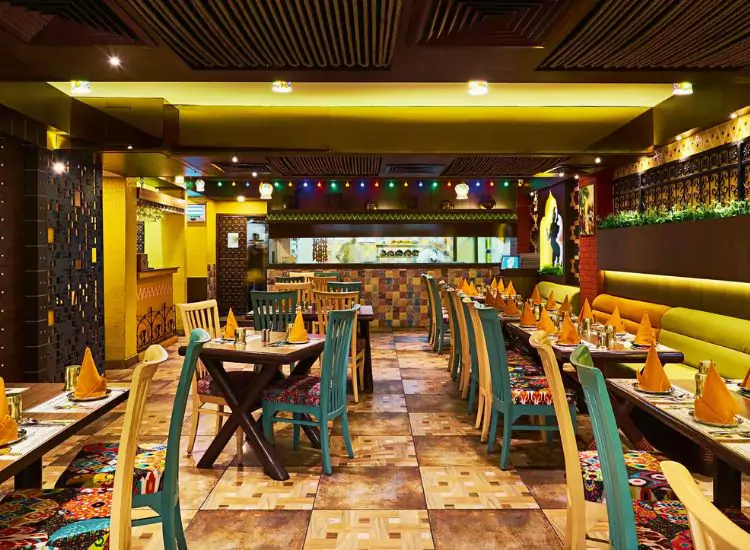17 BEST Places to Visit in Gujarat

Settled peacefully on the western coast of the Indian subcontinent is Gujarat. A place steeped in mythical charm, wildlife wonders, and holy shrines. Ruled by Lord Krishna himself during the Satyug, Gujarat has always remained a prominent holiday destination. Rich in wildlife biodiversity, immaculate Stepwells, and blessed with a divine landscape, Gujarat is a uniquely grand destination that should be on everyone’s bucket list. From being the cradle of civilization to giving the world some of its greatest leaders, Gujarat Tour Packages will be the perfect way of exploring this state of wonders. Here are the 17 best places to visit in Gujarat.
List of the 17 Best Places to Visit Near Me in Gujarat
1. Dwarkadhish Temple
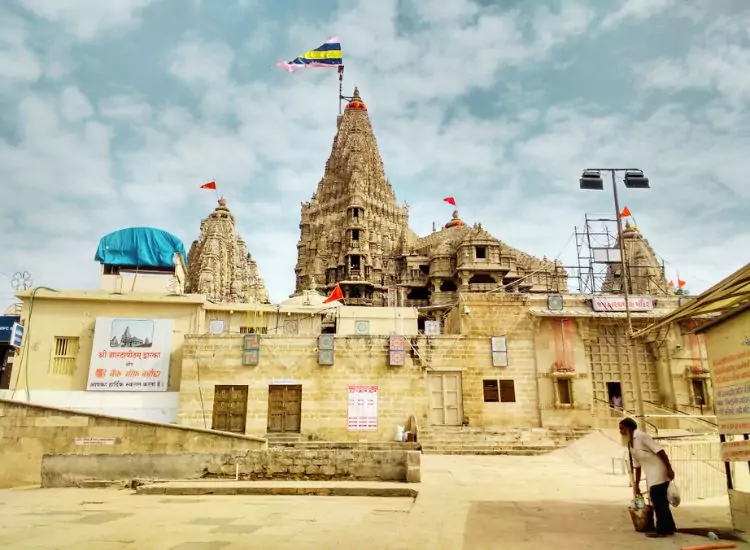
Located in the heart of Gujarat with a massive flag flailing in the wind, Dwarkadhish Temple or Jagat Mandir is an important place of pilgrimage in India. Along with Badrinath, Rameswaram, and Jannath temple, Dwarkadhish is a part of the all-India Char Dham Yatra. The temple is dedicated to Lord Krishna, who is worshipped as the ‘King of Dwarka’. The temple was built by Lord Krishna’s grandson on his initial place of residence, making it incredibly important for all the Krishna devotees. Built over 2,000 years ago, with the main shrine being supported by 72 pillars, the temple is a must-see in the Dwarka Somnath Tour Package.
2. Somnath Mahadev Temple
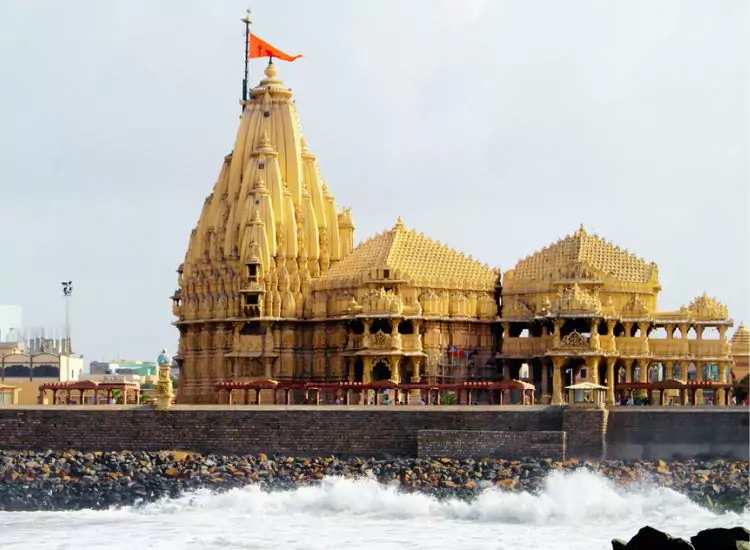
Located in the Prabhas Patan region of Gujarat, Somnath Mahadev Temple is not just a place of Shiva worship, but it is a testament to the dedication and unshakable belief system of the people of India. With a history of being destroyed and rebuilt 17 times, the Somnath Mahadev temple in the holy Prabhas Patan region is one of the most important Shiva Jyotirlingas in India. Built in the Grand Maru Gurjara style of temple architecture, the temple is located against the lashing banks of the Arabian Sea. The first version of the Somnath temple is believed to have been built during the 1st millennium by the moon god himself. The temple is spread out in a sprawling area, complete with immaculate lawns and engaging entertainment centres.
3. Gir National Park
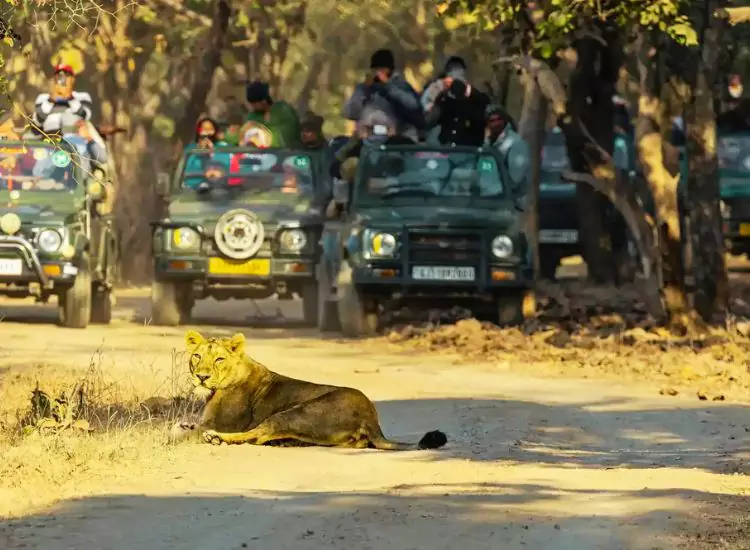
Gujarat presents to you the perfect balance of spirituality and wildlife magnificence. Gir National Park is one of the most important national parks in India. This is the only and the final place for the Asiatic Lion species to call home. Established during the 19th century to offer a protective natural habitat for these lions to thrive and survive, Gir has gained an international level of popularity. Other than Asiatic Lions, the national park is also home to over 2,300 different fauna species, including crocodiles, leopards, hyenas, and many others.
4. Rann of Kutch
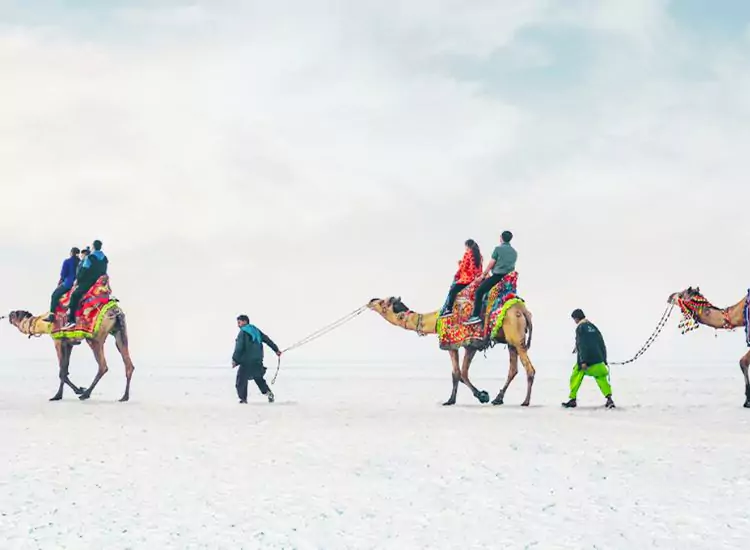
Spread out over an expansive area of 7,500 sq. km., the great Rann of Kutch is a glistening white salt desert. The great Rann of Kutch was once the sprawling shallow Arabian Sea, which turned into a white desert over time as a result of a geological shift. Currently, it is a protected sanctuary that turns into an oasis for pink flamingos during the monsoon season. Every year from December to February, the Rann of Kutch also hosts the grand Rann Utsav, showcasing the rich cultural heritage of Gujarat. It is also home to several Gujarati tribal communities who are known for their creative works, including pottery, leatherwork, Kutchi Embroidery, etc.
5. Marine National Park
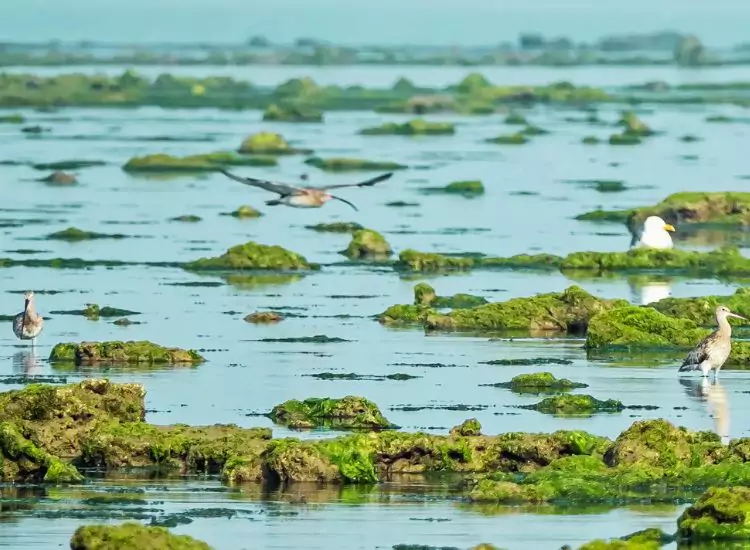
Situated in the Gulf of Kutch, Marine National Park is India’s first wildlife sanctuary and national park dedicated to preserving the aquatic heritage. It is an archipelago of 42 islands, with Pirotan being the best-known island. Covering an area of 458 sq. km. This national park is home to some of the most vibrant, colourful, and endangered species of aquatic life, like giant leatherback turtles, beluga whales, Gangetic dolphins, sea cucumber, sea urchins, etc. Covered in life-giving reefs on the coasts, one can explore the national park from a jetty. One can view one of the richest marine life collections in the country.
6. Statue of Unity

Standing tall at a height of 182 metres, the Statue of Unity is the world’s tallest statue. Located in the Narmada valley, the statue is an imposing structure of the Indian statesman, independence activist, and the first deputy prime minister of India, Sardar Vallabhbhai Patel, also known as the ‘iron man of India’. Facing the Sardar Sarovar Dam, the statue of unity complex contains a 3-star lodging facility, a food court, an artificial lake, a memorial garden, and a museum. At 153 metres, visitors can get an incredibly panoramic view of the Sardar Sarovar Dam as well as the Grand Satpura and Vindhyachal Mountain ranges. Built over 3 years, the statue is a masterpiece that has put India on the world map.
7. Lakshmi Vilas Palace
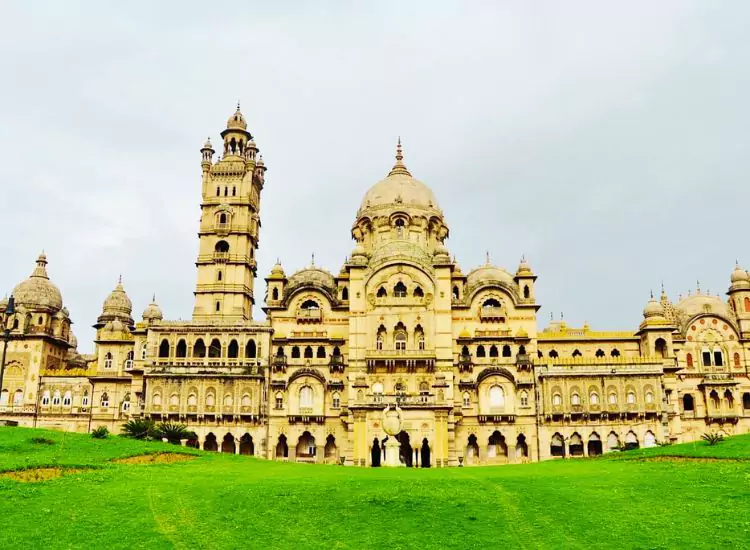
Situated in Vadodara and built by the royal Gaekwad Family, Lakshmi Vilas Palace is an iconic heritage palace. It is famous for being the largest private dwelling and 4 times the size of Buckingham Palace. Built in the Indo-Saracenic style of architecture, the palace is a testament to the rich culture and skills that existed during that era. With over 170 rooms and perfectly curated lawns, the palace construction was initiated in 1878 and took 12 years for its completion. The structure represents an eclectic combination of various styles like Moghul, Rajput, Marathi, Gujarati, as well as Gothic and Venetian designs.
8. Rani Ki Vav
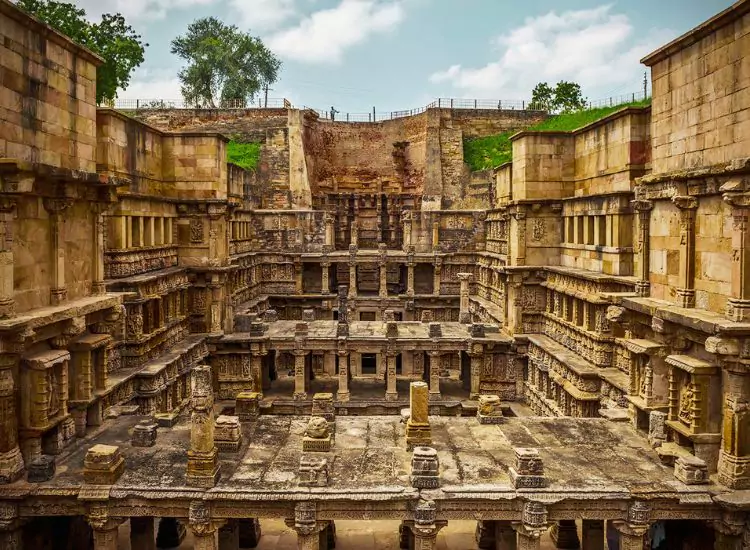
Translating into ‘the queen’s Stepwell’, and situated in the Patan district of Gujarat, Rani Ki Vav occupies the banks of the Saraswati River. The construction of the incredible piece of architecture is credited to Queen Udayamati, the queen of 11th 11th-century Chalukya king Bhima 1. Restored during the 1980s and included in the UNESCO World Heritage Sites, it is one of the finest examples of the architectural brilliance that thrived during those times in Gujarat. Divided into 7 unique levels, the Stepwell contains over 500 principal sculptures, designer panels, and intricately carved pillars. One can witness the details and thoughtfulness that have gone into its creation.
9. Sabarmati Ashram
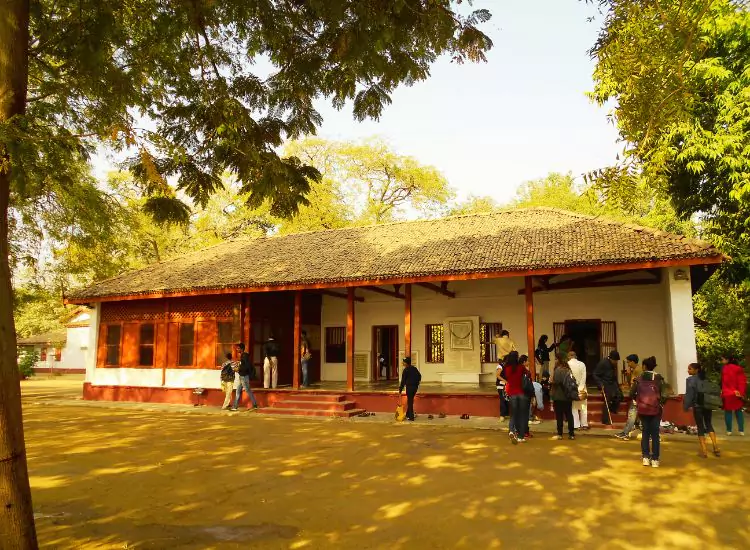
Also known as Gandhi Ashram, Sabarmati Ashram is located in the suburbs of Ahmedabad on the banks of the holy Sabarmati River. It was one of the many residences of Mahatma Gandhi, but its main importance lies in the fact that the ashram had served as the starting point for the Dandi march or the salt Satyagraha, which is later described as one of the most revolutionary acts of non-cooperation. The ashram was established not only with the purpose and vision of a free India, but also for the father of the nation to carry out activities such as animal husbandry, cow breeding, and other such Khadi-related activities.
10. Dholavira
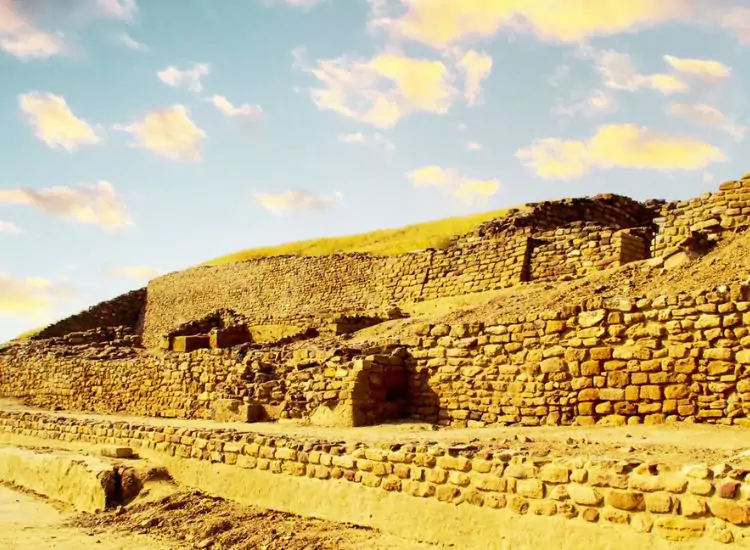
Gujarat has been the cradle of civilization, with prehistoric people settling along the coasts. Dholavira is an archaeological site that is situated in the Kutch district and gives a glimpse into the life of the prehistoric people. Occupying an important place as a UNESCO World Heritage site, the site contains the leftover ruins of the ancient city of the Indus Valley civilization. It is one of the 5 largest Harappan sites and occupies a prominent position in the archeological sites in India belonging to the Harappan civilization. The remnants give its visitors a glimpse of this ancient city, which used to be the grandest city of its time.
11. Bhavnagar
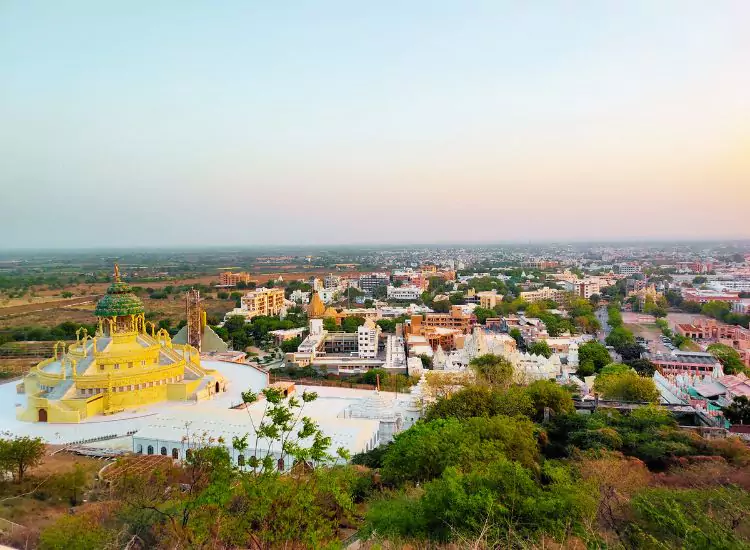
Founded in 1724, the Bhavnagar district of the Saurashtra region has always been a major trading centre. Dotted with numerous large and small industries along with the world’s largest ship-breaking yard, Bhavnagar is also famous for its snacks like Gathiya. One can spend some quality time exploring the gifts of Gujarat in Bhavnagar. Some of the must-visit places in Bhavnagar include Nishkalank Mahadev Temple, Victoria Park, Khodiyar Mandir, Takhteshwar Mahadev Temple, Blackbuck National Park, etc. If you wish to indulge in some shopping, then this is the place to be in Gujarat, as Bhavnagar is mainly famous for its diamonds and textile collections.
12. Modhera Sun Temple
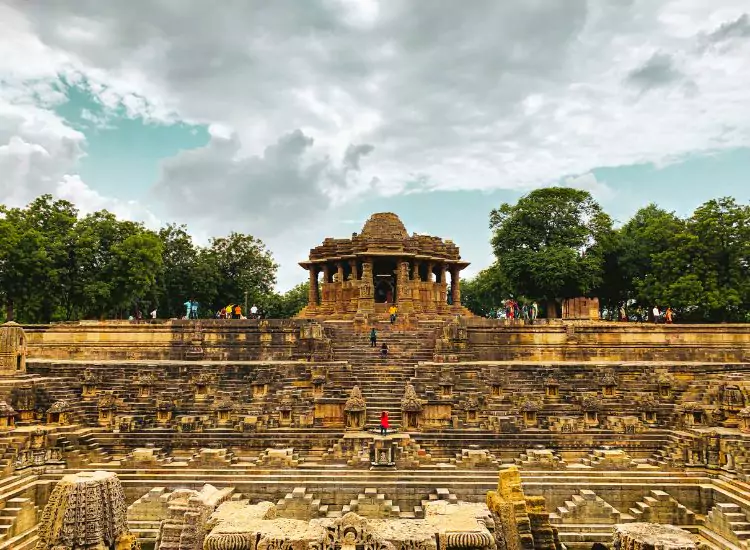
As the name suggests, this ancient Hindu temple is dedicated to the solar deity Surya and is located in the village of Mehsana district. Gracing the banks of the river Pushpavati and built during the 10th century, the temple, which was initially an important place of worship, is not a heavily protected site by the Archaeological Survey of India. Consisting of 3 major components, like the shrine hall, the assembly hall, and the reservoir, every inch of the temple structure is covered in elaborate and intricately carved designs, sculptures, and figurines. The temple hosts the 3-day-long Modhera Dance festival that showcases various classical dance forms.
13. Champaner Pavagadh Archaeological Park
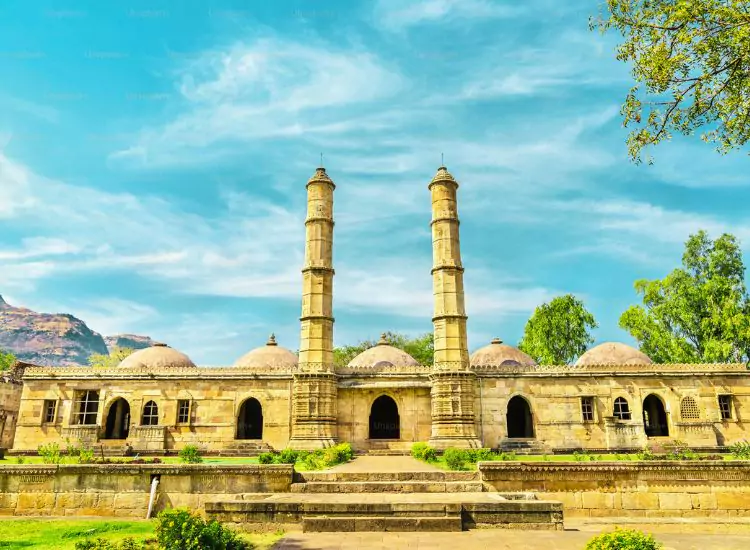
Situated in the district of Panchmahal, with archeological installations dating back to the 8th century and earlier, the Champaner Pavagadh Archaeological Park is an incredible UNESCO World Heritage Site. The area is also covered in unexcavated archaeological, historical, and living cultural heritage properties. The site is replete with palaces, fortifications, religious sites, water installations, and more. Most of the pilgrims make it a point to visit the Kali Mata Temple, which is located on top of the Pavagadh Hills. The entire area is spread over an area of 7,200 acres. This entire region used to hold immense importance due to its strategic location.
14. Girnar Hills
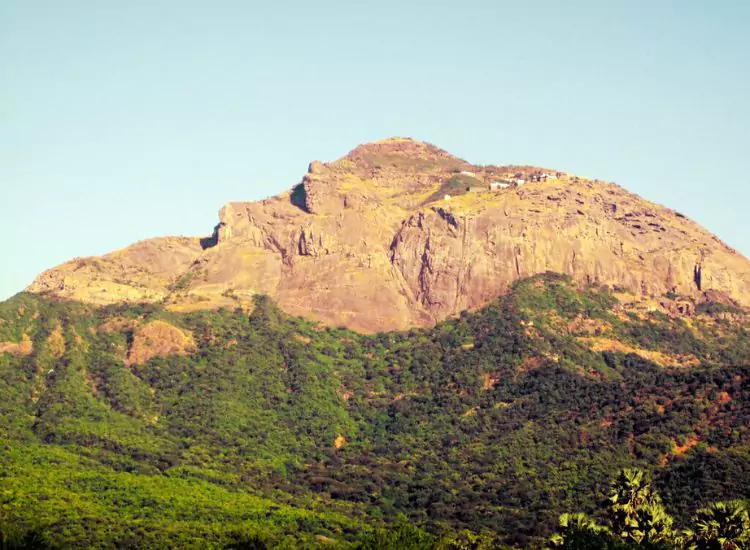
The pilgrimage centre of Girnar Hills is one of the most iconic holy places in Gujarat. Also known as Revatak Parvata, Girnar Hills are the sacred mountains that are covered entirely in Hindu and Jain Temples. The entire pilgrimage to the top is covered by climbing up 10,000 steps to the summit. The clusters of Jain Temples are elaborately constructed and intricately decorated in mosaic tiles and designs. During important festivals, these temples are graced by the presence of monks and spiritual heads from all over the world. It is one of the most spiritually active places in India that will leave your soul rejuvenated.
15. Dandi Beach
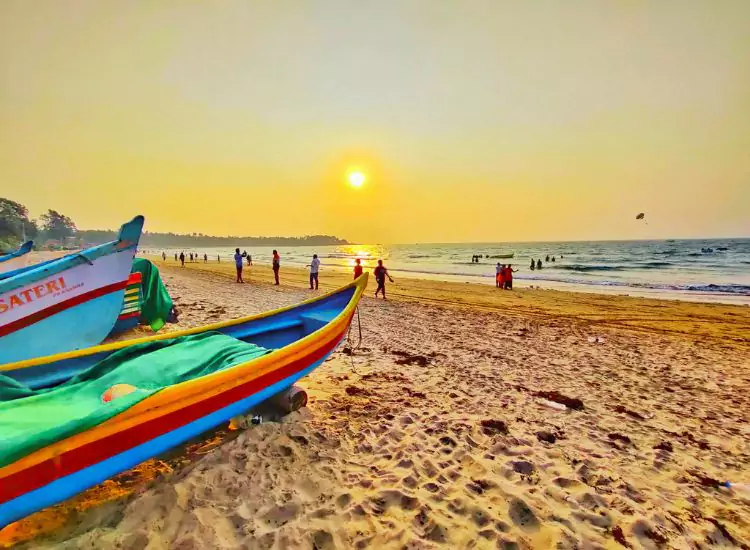
When we speak of Dandi, we only think of Mahatma Gandhi leading the way to make his salt as a harmless yet stern way of stating noncooperation against the British. Ever since the salt marshes of Dandi had turned into a Satyagraha movement spot during the 1930s, this beach gained serious momentum as not just a beach but as a place of immense historical and evolutionary significance. Situated near Navsari, the salt marshes of Dandi beach make for the perfect place to go with your family and reflect on the past.
16. Adalaj Stepwell
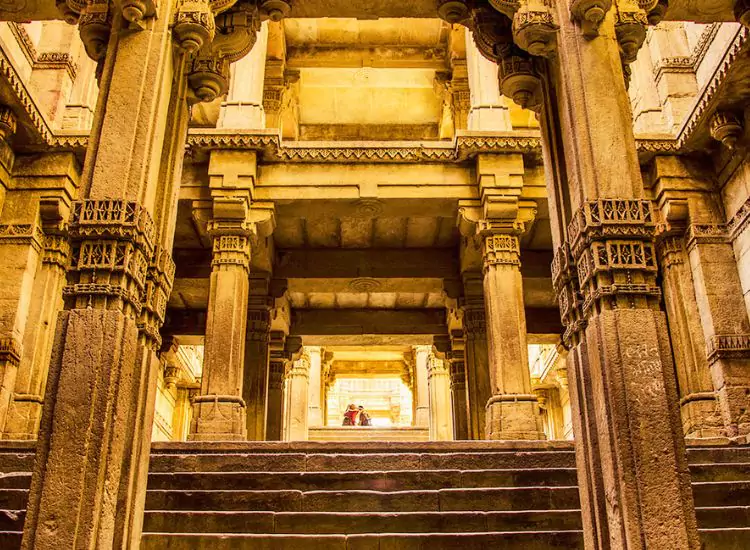
Gujarat is known for its incredible architectural marvels. Other than forts, temples, and palaces, the Stepwells of Gujarat make for an important heritage feature. Adalaj or the Rudabai Stepwell is located in the village of Adalaj, close to the district of Gandhinagar, and is one of the most exemplary works of Gujarati architecture and design at its best. Built during the 14th century, the stepwell served a very important purpose of water storage for the locals in this semi-arid region and was a blessing in disguise for the locals to use its water for various purposes. Every bit of the stepwell is covered in intricate engravings, sculptures, and carvings that will leave you in awe.
17. Kankaria Lake
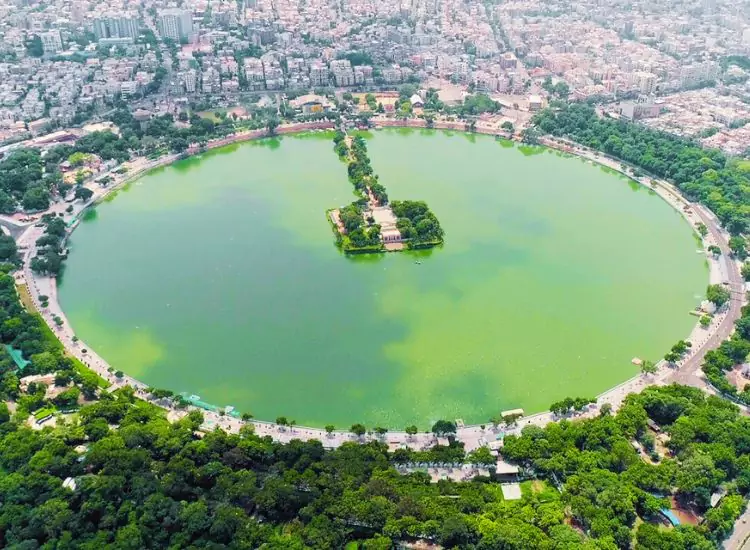
Settled in the southeastern part of Gujarat, the Kankaria Lake front is a world-class manmade lake with a periphery of about 2.5 km. Locals of Ahmedabad frequent this place with their families and loved ones to make use of the entertainment facilities available here. Completed in 2008, the lake boardwalk consists of a mini train, food courts, walkways, and other such complete entertainment centres. Initially, the lake was constructed during the Solanki period in order to provide the people living in the surrounding regions with water for everyday usage. It is a fun spot to spend the weekend with the family, and there are various facilities available for the kids to also indulge in.


